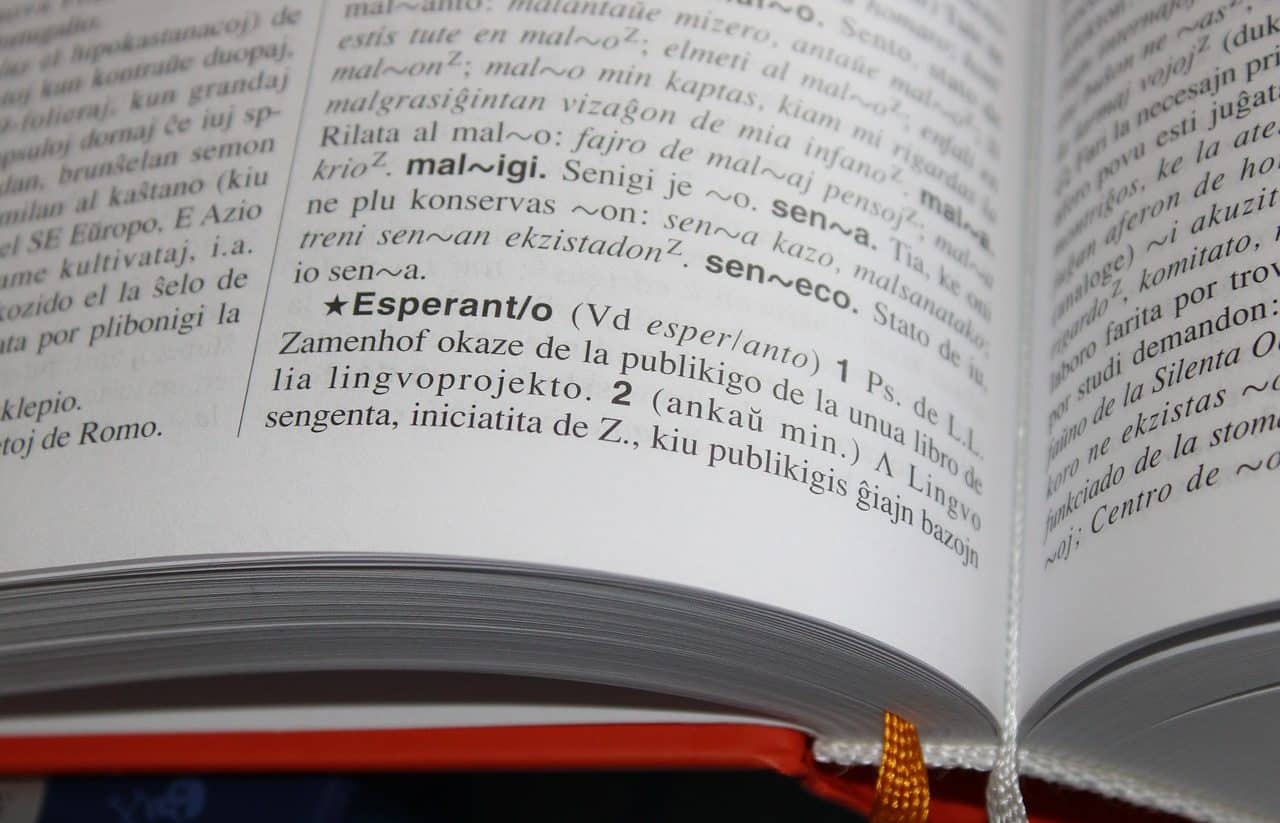
The Esperanto alphabet has 28 letters.
Esperanto is an artificial language created by LL Zamenhof in the 19th century . This Polish ophthalmologist made known the precepts of this language in 1887 , although its development took him many years.
The goal of Zamenhof was to facilitate international communications and contribute to understanding between peoples. For this, he devised an auxiliary or complementary language, without attempting to replace the national languages .
History of Esperanto
The history of Esperanto begins when Zamenhof was a child and began to imagine creating an international language that could be easily learned and used. At first, he took elements from ancient Greek and Latin and sought to simplify them, although he later realized that his mission required the implementation of a new language.
In 1878 , when he turned 19, Zamenhof presented to his friends the first version of his language , which he then called Lingwe Uniwersala (an expression that can be translated as "universal language" ). When traveling to Moscow to begin his medical studies, he asked his father to keep his project for him, although the man burned the documentation.
Three years later, upon returning to Warsaw (where he lived before temporarily settling in the Russian capital), he discovered what his father had done. Despite this situation, he decided to resume the project, analyzing issues of linguistics , semantics , syntax and phonetics to achieve his objective.
Finally, after getting married, Zamenhof published together with his wife - and with the financing of his father-in-law - the work that marked the official launch of modern Esperanto: “Unua libro” .
The number of Esperanto speakers originally grew in the Russian Empire and then spread throughout Eastern Europe and Central Europe before continuing throughout the rest of the Old Continent . The advancement of the language continued through Japan , China and America .
An important step in the development of the Esperanto movement took place in 1905 . In that year, Boulogne-sur-Mer hosted the first edition of the Universal Esperanto Congress , which brought together speakers from all over the world. Three years later, the World Esperanto Association was born and is still active.

An Esperanto dictionary allows you to know the vocabulary, lexicon and spelling of the language.
The volapük
Volapük is another artificial language that developed in parallel to Esperanto. In fact, Zamenhof himself learned it, just as he did with Latin, Greek , English, French, German and Hebrew (Polish, Yiddish and Russian were also the mother tongues of this polyglot. ).
A German priest named Johann Martin Schleyer created the volapük in 1879 . Like Zamenhof , its purpose was to contribute to understanding between individuals from different cultures .
Volapük had explosive growth and had nearly 100,000 people who spoke it. However, its complicated grammar and pronunciation difficulties caused its downfall. In contrast, Esperanto - which is not the official language of any country - achieved sustained growth and today has about 2 million speakers according to the most optimistic estimates.
It cannot be omitted to mention that there are other constructed languages besides Esperanto and Volapük. Among them, Interlingua , Toki Pona, Ido and Lojban stand out.

Thanks to language learning applications such as Duolingo, Rosetta Stone, Memrise and Babbel, it is possible to acquire notions of Esperanto.
Esperanto rules
The principles of Esperanto are based on 16 fundamental rules . These grammatical precepts were brought together in “Fundamento de Esperanto” , a book that Zamenhof edited in 1905 .
The rules indicate that Esperanto only has one definite article ( la ) for all cases, numbers and genders. To form nouns, meanwhile, the suffix -n is added to the nominative.
The formation of adjectives requires adding an a to the final part of the stem. Numeral adjectives, on the other hand, are invariable.
Esperanto verbs, on the other hand, do not change in number or person, which simplifies the conjugations. Adverbs, in turn, are created by incorporating an e to the root, while prepositions are responsible for governing the nominative.
Another important rule of Esperanto is that the pronunciation of words is the same as their writing, with the tonic accent always on the penultimate syllable.
The Esperanto culture
The idea of Esperanto culture refers to cultural products developed using Esperanto. It is estimated that there are more than 30,000 books in Esperanto , for example.
Music in Esperanto , for its part, has exponents of the most diverse genres, from rock to electronic, including pop, reggae and choral expressions. Films in Esperanto , on the other hand, are scarce: only four feature films are known internationally, with “Angoroj” as a pioneering work.
In addition to cinema, music and literature in Esperanto, there are media outlets that are dedicated to broadcasting content in this language. Many of these stations take advantage of the benefits that the Internet offers for broadcasts: in fact, it is possible to listen to radio in Esperanto thanks to the Web. Likewise, there are a hundred magazines in Esperanto that are published regularly.
It is important to indicate that, in addition to the creation of works in this language, adaptations to Esperanto are also usually made through translation . Edgar Allan Poe , William Shakespeare , Mark Twain , Oscar Wilde , Charles Dickens , Honoré de Balzac and Lord Byron are some of the great authors whose works were translated.
